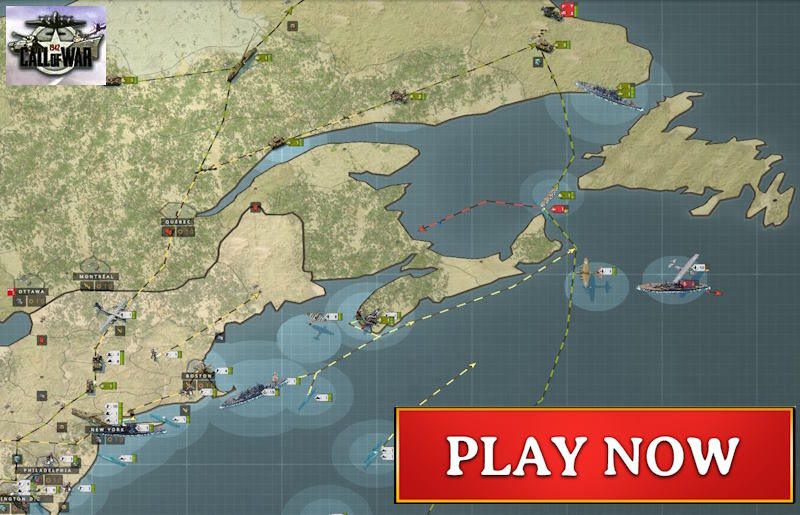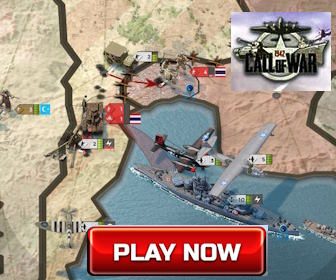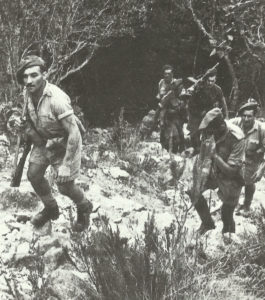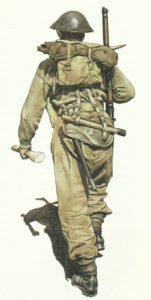Strength and organization of the British army in Italy from 1943 to 1945.
Orders of Battle (September 1943, May 1944 and April 1945), uniforms and insignia.
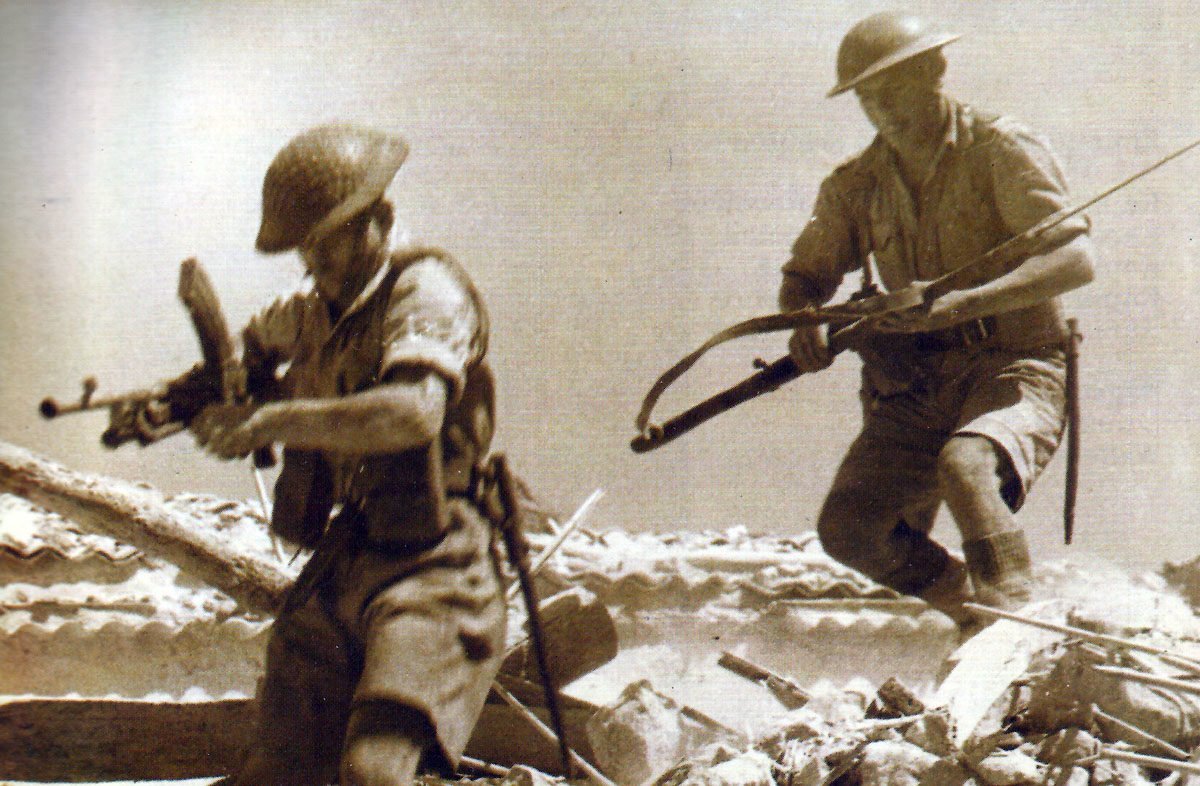
With the surrender of the German and Italian armed forces in North Africa on 13 May 1943, the Allies had reserves of troops and material at their disposal for deployment elsewhere in the Mediterranean region – for example in Sicily.
British Army in Italy
Table of Contents
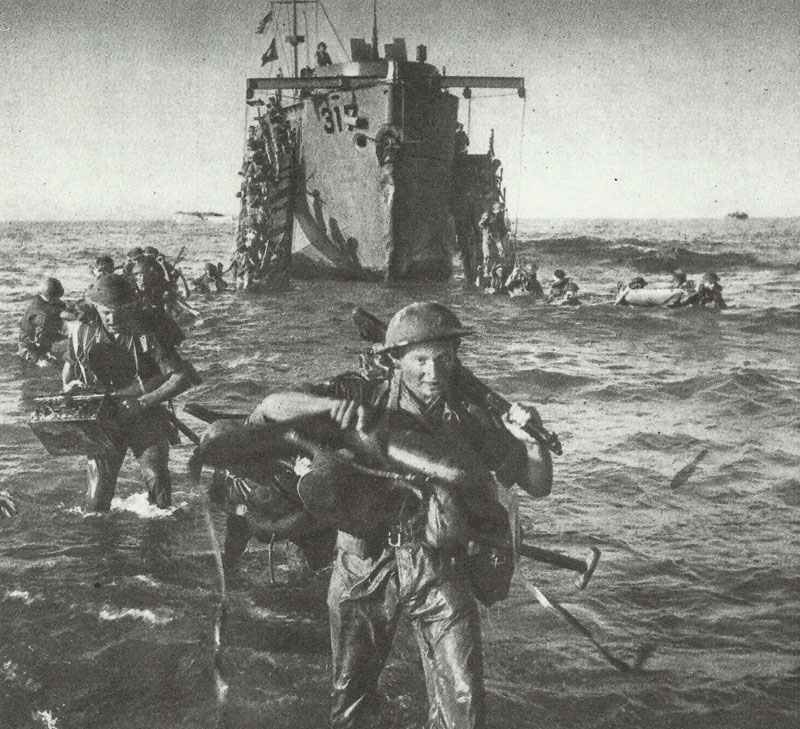
The TOE strengths of the British formations in North Africa and the Middle East differed markedly from those in Great Britain. The importance of mobility and supply over long distances was much greater here, with the result that, for example, the British 51st Division, together with its support units, had a total of 40,000 men with 8,000 vehicles.
For the invasion of Sicily on 9 July 1943, the British troops of the 8th Army were organized into two corps:
The XIII Corps with the British 5th Division, 50th Division and 231st Brigade.
The XXX Corps with the British 51st Division and the 1st Canadian Division.
On 25 July, these units were strengthened by the 78th Division, bringing the total number of British and Commonwealth troops to 115,000 men.
After a skillful campaign, the Anglo-American forces had gained control of the island on 17 August, the British losing 9,353 men.
The invasion of the actual Italian mainland began on 3 September 1943 with offensive landings carried out from Sicily across the Strait of Messina by the troops of the XIII Corps.
On 9 September, the 1st Airborne Division was put ashore in Taranto to secure control of the ‘heel’ of the Italian ‘boot’.
By 16 September 1943 the strength of the British 8th Army in Italy had grown to 63,600 men with 15,270 vehicles and so far only 635 losses have been reported.
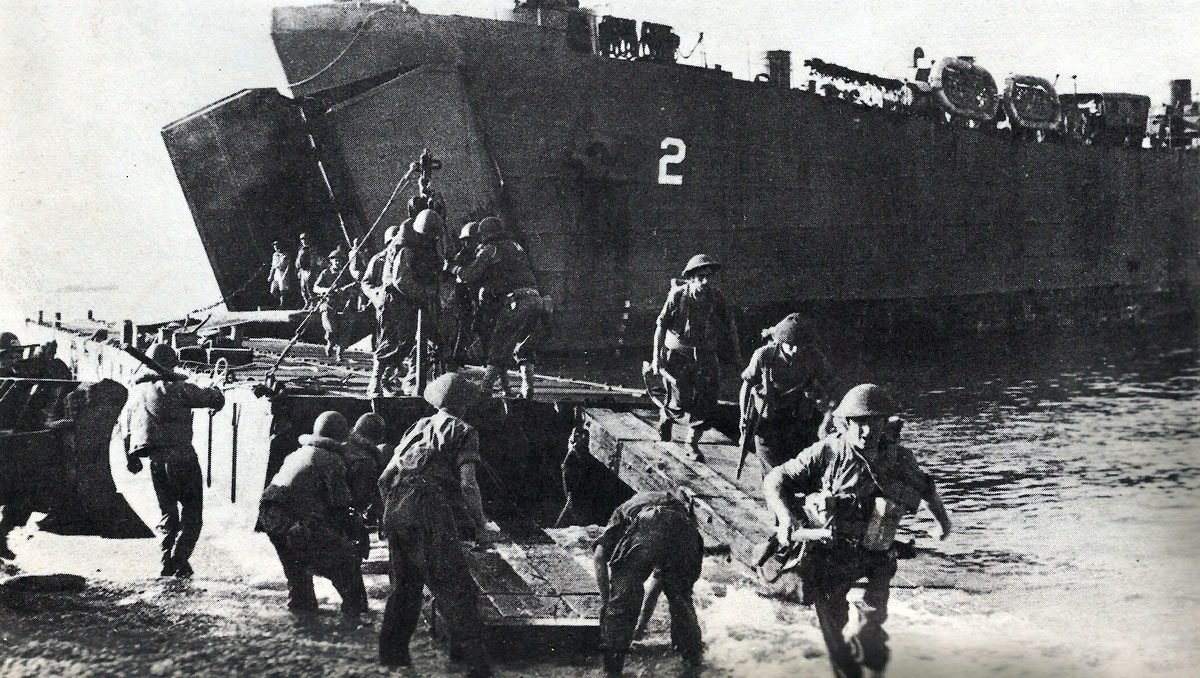
The 5th US Army, which had landed at Salerno on 9 September, consisted of American and British units. Among the latter was the British X Corps, which consisted of the 7th Armored Division, the 46th and 56th Infantry Division and the 23rd Armored Brigade.
During the Battle of Salerno, the British units lost 725 officers and men killed, 2,739 wounded and 1,800 missing.
Naples fell on the 1st of October and on the 12th of the month the protracted advance towards Rome began.
The big problem, after the Allies had settled in Italy, was the need to strengthen their forces as quickly as possible in view of Germany’s numerical superiority. In the last week of September 1943, the 8th Army was strengthened by the 78th Infantry Division (11th, 36th and 38th Brigades), the 4th Armored Brigade, the Special Service Brigade (3rd Commando, 40th Royal Marines Commando, and 1st Special Raiding Squadron) and the 8th Indian Infantry Division.
On 9 October 1943, the 8th Army consisted of two corps, each consisting of two infantry divisions, an armored brigade and an artillery group.
By the end of November, the British Armed Forces in Italy amounted to 351,000 officers and men. The average size of a British infantry division, including its support units, was now 40,000 men. The problem of finding replacements for the infantry in Italy was therefore often acute. This was particularly true in view of the fact that 58 per cent of the 46,000 combat losses suffered by units of the British army between September 1943 and March 1944 had occurred in the infantry.
In February 1944 the infantry battalions of the 1st and 56th divisions fought with only 72 and 68 per cent respectively of their TOE strength and in March the official number of infantry battalions of the British army in the Mediterranean area had to be reduced from 844 to 726.
By the end of December, the British component of the 5th US Army had lost the 7th Armored Division, which had been withdrawn in preparation for the Normandy invasion. But it was just about to receive the British 1st Infantry Division as reinforcement.
Since its arrival in Italy, the X Corps had 1,669 killed, 7,023 wounded and 2,869 missing.
The British 8th Army had also changed its composition and consisted of two British infantry divisions (the 5th and 78th), two Indian infantry divisions (the 4th and 8th), the New Zealand division, a Canadian infantry division and a Canadian armored division.
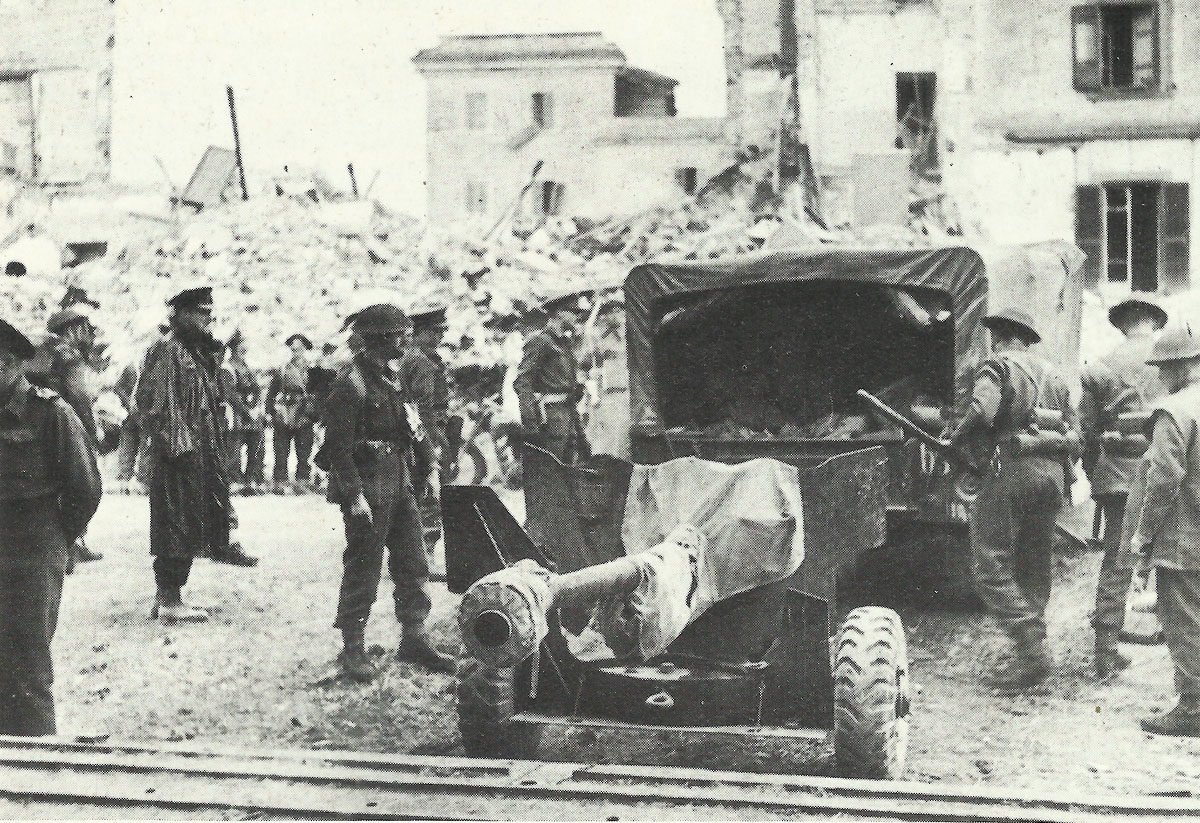
At the beginning of 1944, a procedure was initiated to strengthen the 5th US Army by units of the British 8th Army and to close the gaps in the latter by newly arrived formations in Italy. In preparation for the landing at Anzio, the 3rd US and British 1st Division formed the 6th US Corps.
For this landing on 22 January 1944, the British 1st Division deployed the 2nd and 3rd Infantry Brigades and the 24th Guard Brigade, the 46th Royal Tank Regiment and the 2nd Special Service Brigade (9th and 43rd Royal Marine Commandos).
By 9 February the division had been reduced to just over half its original strength by losses in combat and six weeks after landing at Anzio British losses amounted to 10,168 men.
When the Allied armies marched into Rome on 4 June 1944, the British and Commonwealth losses had totaled 73,122 since crossing the Strait of Sicily: 14,331 killed, 47,966 wounded and 10,825 missing.
On 30 December 1943, General Sir Oliver Leese had taken command of the British 8th Army, after leaving Montgomery for the 21st Army Group for the planned Normandy invasion. At the same time, Eisenhower was replaced by Sir Henry Maitland Wilson as Allied Commander-in-Chief on the Mediterranean theater. General Sir Harold Alexander, who had been Eisenhower’s deputy, became commander-in-chief of the Allied armies in Italy.
When Alexander began his last advance to Rome, the 8th Army went into battle with three British and the Commonwealth Corps as well as the Polish Corps.
The XXX Corps had been transferred to Great Britain on November 5, 1943, but the X Corps returned from the 5th US Army on 31 March 1944.
The Order of Battle of the British 8th Army – without the Poles – was as follows at that time:
V Corps:
10th Indian Infantry Division,
4th Indian Infantry Division,
7th Armored Brigade,
X Corps:
2nd New Zealand Division,
XIII Corps:
4th British Infantry Division,
8th Indian division,
1st Canadian Tank Brigade,
78th British Infantry Division,
6th Armored Division,
Army reserve:
1st Canadian Corps,
25th Army Tank Brigade,
6th South African Armored Division.
Ready in May 1944, the 8th Army possessed about 1,200 tanks, but what was still missing was a sufficiently strong infantry to quickly break through German defensive lines, which took advantage of all available terrain advantages.
The V Corps, spearhead of the offensive, had four infantry divisions (the British 4th, 46th and 56th and the Indian 4th division), but the losses were heavy. In the three months since July the 8th Army had suffered almost 20,000 men in combat. As a result, each infantry battalion had to be reorganized. In autumn 1944 the offensive came to a standstill.
Meanwhile, in the Balkans, a British force with paratroopers and an armored brigade was sent to help the Greek nationalist troops gain control of Greece after the German withdrawal at the end of 1944.
In the winter of 1944-45, the British forces prepared for the imminent attack on the German lines. The British army, supported by a massive air raid, launched its offensive on 9 April, which was a complete success. Within three weeks, the German army was on the verge of collapse, and on 2 May, handover conditions were agreed.
British losses during the Italian campaign amounted to 88,790 men.
Orders of Battle
Allied Forces in Italy 3-9 September 1943 (15th Army Group):
Army | Corps | Divisions |
|---|---|---|
Air Landing Forces | 1 Para. Div (Taranto, 9 Sep) |
|
82 US Para. Div (Salerno, 9 Sep) |
||
5th US Army (Salerno 9.Sep) | X Corps | 56 Inf.Div. |
46 Inf.Div. |
||
7 Arm.Div. |
||
VI US Corps | 36 US Inf.Div. |
|
45 US Inf.Div. |
||
3 US Inf.Div. |
||
34 US Inf.Div. |
||
8th Army (Calabria 3 Sep) | XIII Corps | 5 Inf.Div. |
1 Can Inf.Div. |
||
1 Can Ay.Tank-Brigade |
||
231 Inf.Brigade |
||
154 Inf.Brigade |
Allied Forces in Italy 11 May 1944 (15th Army Group):
Army | Corps | Divisions |
|---|---|---|
5th US Army | II US Corps | 85 US Inf.Div. |
88 US Inf.Div. |
||
French Exped.Corps | 2 Mor. Inf.Div. |
|
3 Alg. Inf.Div. |
||
4 Mor. Inf.Div. |
||
4 French Mot.Inf.Div. |
||
VI US Corps | 1 US Arm.Div. |
|
1 S.S.F |
||
3 US Inf.Div. |
||
34 US Inf.Div. |
||
36 US Inf.Div. |
||
45 US Inf.Div. |
||
1 Inf.Div. |
||
5 Inf.Div. |
||
8th Army | Reserves | 6 SA Arm.Div. |
XIII Corps | 6 Arm.Div. |
|
78 Inf.Div. |
||
4 Inf.Div. |
||
8 Indian Inf.Div. |
||
1 Can. Arm.Brig. |
||
I Can. Corps | 1 Can. Inf.Div. |
|
5 Can. Arm.Div. |
||
25 Ay.Tank Brigade |
||
Polish Corps | 3 Polish Inf.Div. |
|
5 Polish Inf.Div. |
||
2 Polish Arm.Brig. |
||
V Corps | 2 NZ Inf.Div. |
|
4 NZ Arm.Brig. |
||
X Corps | 4 Indian Inf.Div. |
|
10 Indian Inf.Div. |
Allied Forces in Italy 9-12 April 1945 (15th Army Group):
Army | Corps | Divisions |
|---|---|---|
5th US Army | Reserves | 85 US Inf.Div. |
92 US Inf.Div. |
||
IV US Corps | 1 US Arm.Div. |
|
10 US Mt.Div. |
||
1 Brazil. Inf.Div. |
||
II US Corps | 6 SA Arm.Div. |
|
34 US Inf.Div. |
||
88 US Inf.Div. |
||
91 US Inf.Div. |
||
8th Army | Reserves | 25 Arm.Eng.Brigade |
6 Arm.Div. |
||
2 Para.Brigade |
||
V Corps | 56 Inf.Div. |
|
78 Inf.Div. |
||
8 Indian Inf.Div. |
||
2 NZ Inf.Div. |
||
21 Tank Brigade |
||
4 NZ Arm.Brigade |
||
9 Arm.Brigade |
||
II Polish Corps | 3 Polish Inf.Div. |
|
5 Polish Inf.Div. |
||
2 Polish Arm.Brigade |
||
7 Arm.Brigade |
||
Italian Cremona Group |
||
X Corps | Jewish Brigade |
|
Italian Fruli Group |
||
XIII Corps | 10 Indian Inf.Div. |
|
Italian Folgore Group |
Uniform
However, once the fighting really started, the troops began to wear more comfortable and practical clothes, which became more and more standardized and the differences between officers and men decreased.
The officers wore a tropical version of the khaki service uniform, made of khaki drill, gabardine or barathea materials and including a tunic, shirt and tie, shorts or long trousers, worn either with khaki socks and shoes, or with puttees and ankle boots.
The vehicle personnel wore breeches, either with booties or field boots. The Wolseley sun helmet was gradually replaced by the British steel helmet, the peaked cap or the field service cap.
In active service, all ranks wore the khaki drill shirt, pullover, shorts or long trousers, while officers in North Africa began to use corduroy trousers and suede ‘chukka’ boots with rubber soles that were better suited to desert clothing.
The rapid temperature changes that occurred in the Middle East required all ranks to be equipped with a greatcoat.
Insignia
Officers wore rank badges on the shoulder straps and a slit in the pullover made it possible to wear the shoulder straps of the shirt underneath outside the pullover.
NCO’s wore their rank badges with white tape on the shirt and sweater.
Formation signs and other corps or regiment insignia were either worn on the shoulder straps or sewn to the sleeves of both the khaki clothing and the drill uniforms.
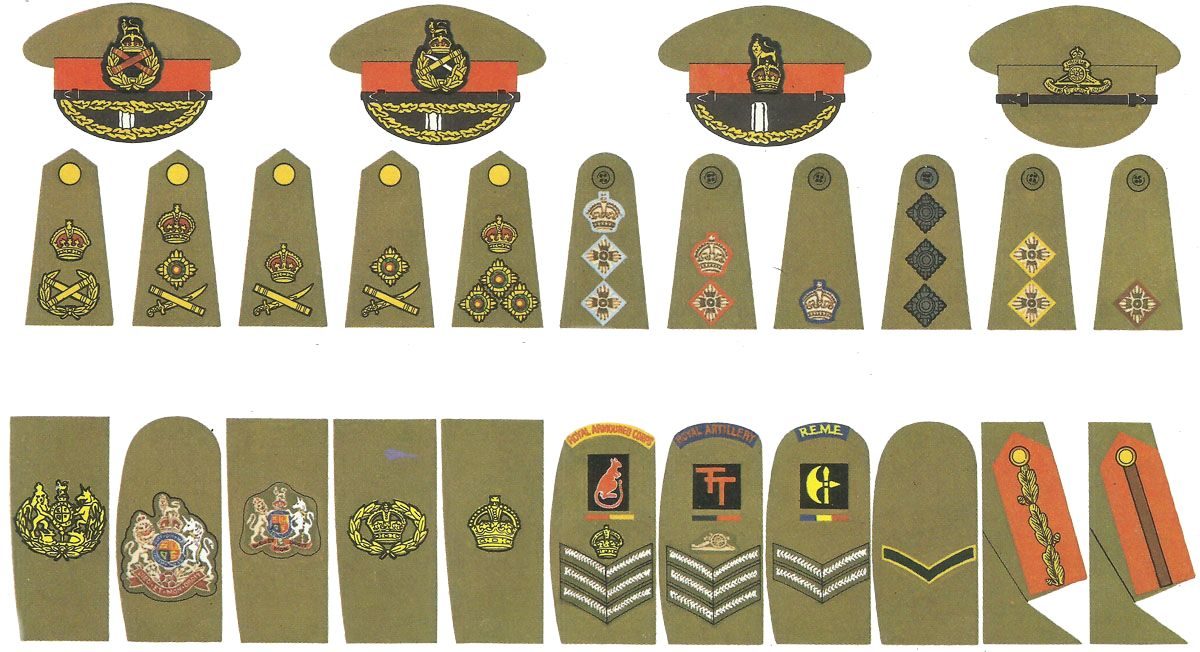
Uniform insignia of the British Army in World War II:
Row 1 (cap badge, from left to right): Field marshal; Generals; Brigadier and Substantive Colonel; other Officers.
Row 2 (shoulder badge, from left to right): Field Marshal; General; Lieutenant General; Major General; Brigadier; Colonel (Education Corps); Lieutenant Colonel (Infantry); Major (Royal Engineers); Captain (Rifle Regiment); Lieutenant (RAC Tank Corps); 2nd Lieutenant (Paratroopers).
Row 3 (Arm badge, from left to right): Staff Sergeant Major (1st class); Regimental Sergeant Major (Foot Guards); Warrant Officer (1st class); Warrant Officer (2nd class), Warrant Officer (3rd class); Staff Sergeant (Staff Sergeant RAC, 7th Armd.Div); Sergeant (RA 50th Inf.Div.); Corporal (REME 78th Inf.Div.); Lance-Corporal (KOYLI); Collar Patch for Field Marshal and Generals; Collar Patch for Brigadier and Subst. Colonel.
References and literature
The Armed Forces of World War II (Andrew Mollo)
World War II – A Statistical Survey (John Ellis)


